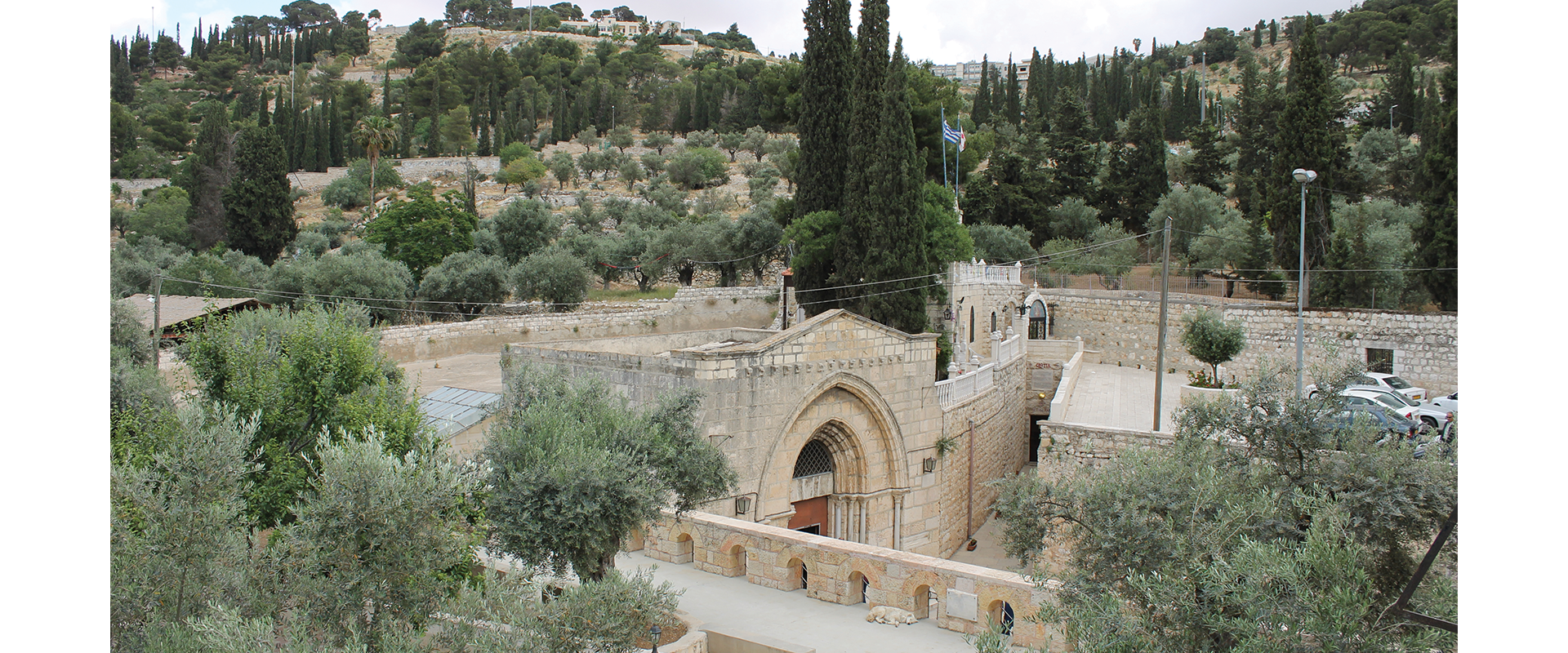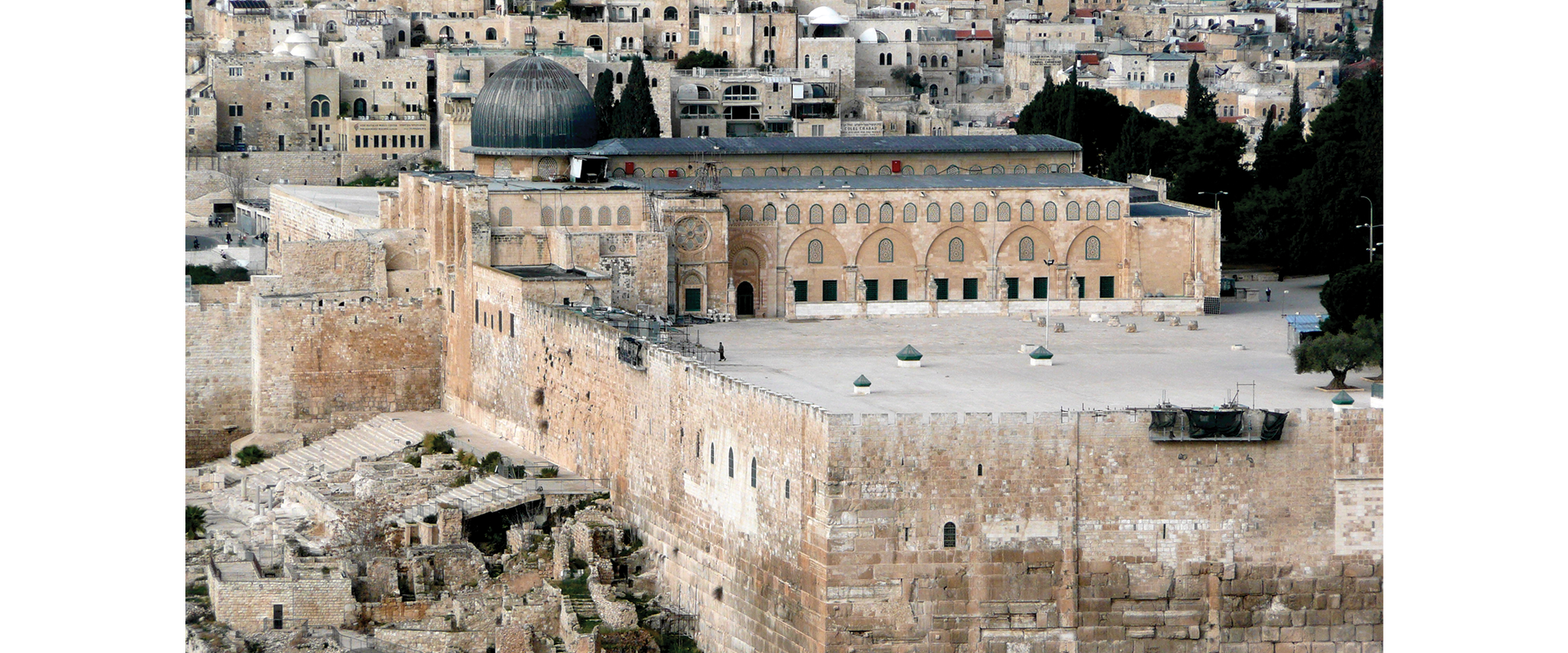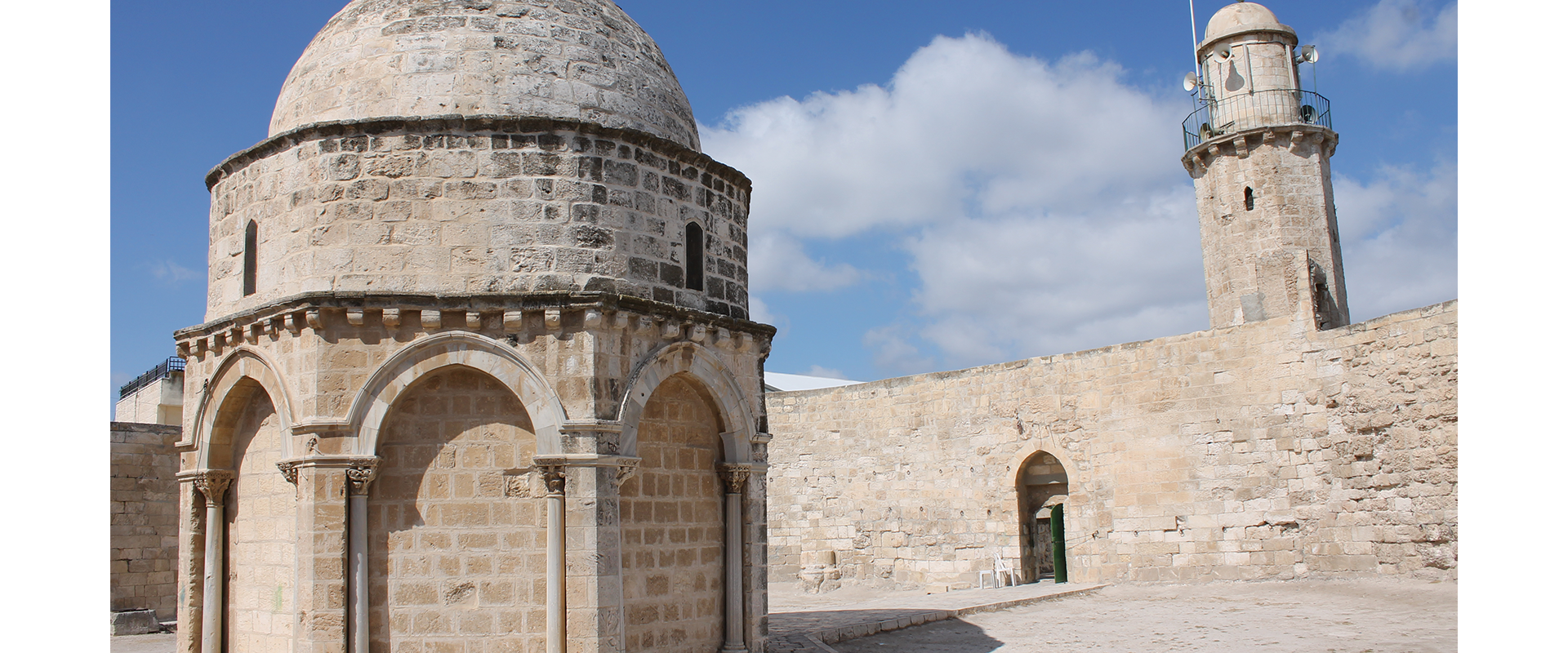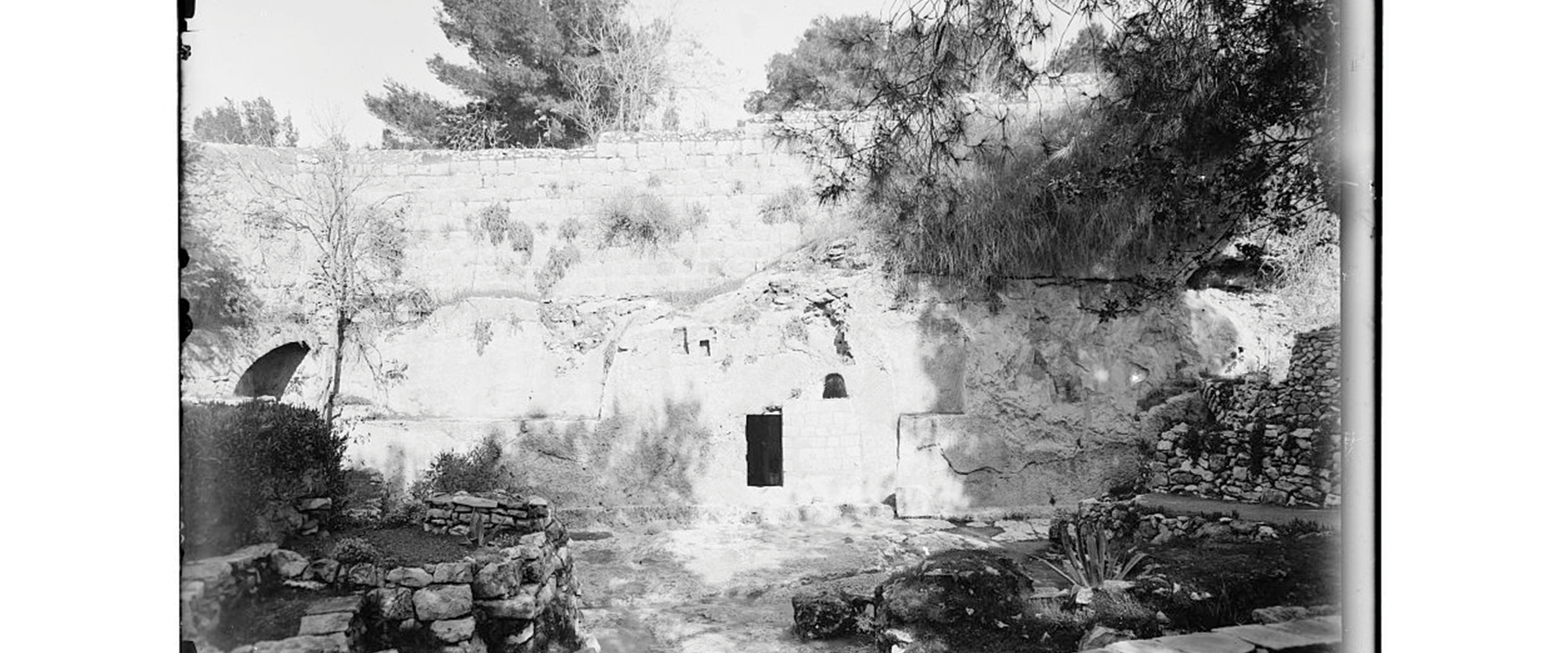
Exterior of the Tomb of Mary

Exterior of the Church of the Holy Seplucher

Exterior of the Al-Aqsa Mosque

Exterior of the Church/Mosque of the Ascension

Exterior of the Garden Tomb
Temple of Solomon
Temple of Solomon, or the First Temple, was constructed in 960 BCE by King Solomon. The Bible describes the appearance of the Temple, including measurements of the structure. An inner room called the Holy of Holies contained the Ark of the Covenant that housed the tablets containing the Ten Commandments. The Temple was destroyed by the Babylonians in 586 BCE and the Ark of the Covenant was lost.
Destruccio Iherosolime [cartographic material]
Gestalt des Tempels Salomonis mit seinen dreyen Vorhofen [cartographic material]
Herodian Temple
The Herodian Temple, or the Second Temple, was originally rebuilt in 516 BCE after Cyrus the Great conquered the Babylonians and allowed the Jews to return to Jerusalem and rebuild their Temple. In 37 BCE, King Herod added to the existing Temple, such as retaining walls increasing the size of the mountain on which the Temple stood so he could increase the size of the Temple complex. He also built a fortress to guard the Temple Mount and dedicated it to Mark Antony, signaling his alliance with Rome. The Second Temple was destroyed in 70 by the Romans after they defeated the Jews in the Great Revolt.
The Temple as it was in Christe time. [cartographic material] / T.F. John Goddard sculpsit
Dome of the Rock
The Dome of the Rock was built in 691 by Abd al-Malik, the Umayyad Caliph, and is a symbol of the rise of Islam but it is not a mosque. It is built on the Temple Mount where the Jewish Temples once stood. The interior contains inscriptions, one of which is directed at Christianity, clarifying that Jesus was a prophet of God and not the Son of God. Christian pilgrims in the period of the crusades began to identify the building as the Temple of Solomon. This identification continued to be reflected in representations of the building in printed books of the early modern period. In Islamic tradition, this is the location where Muhammad traveled during his night journey before ascending to heaven where his visited heaven and hell.
https://archnet.org/sites/2814
https://archnet.org/sites/4348
Al-Aqsa Mosque
Al-Aqsa Mosque sits on the Temple Mount and was begun by Abd al-Malik at the end of the 7th c and completed by his son al-Walid (709-715). However, over the centuries it has undergone various restorations and renovations. The mosque is a basilica with a central nave and six aisles. It was damaged in a 1969 fire deliberately set by a Christian tourist.
https://archnet.org/sites/2809
Tomb of David
The original Tomb of David was lost after the Bar Kokhba revolt in 135 CE. However, popular tradition places the tomb on Mt. Zion. This location has been accepted by Jews, Christians, and Muslims for about 1,000 years and is still an important pilgrimage site, especially for Jews.
Church of the Holy Sepulcher
The Church of the Holy Sepulcher was first in the final years of the reign of the Roman Emperor Constantine, (r. 306-37), on the site of Jesus’s Crucifixion (Mount Calvary, or Golgotha) and burial. Although the church has been reconstructed several times since then, the layout established in the Constantinian period has been preserved. A rotunda called the Anastasis (Greek: Resurrection) encircles a smaller tomb structure where, in the Christian tradition, Christ’s body was buried until his Resurrection. An adjoining basilica both provides a space for worship and connects the site of the burial of Christ. The church was substantially damaged during the reign of the Fatimid caliph al-Hakim (r. 996-1021); reconstruction and was carried out in the eleventh century and further reconstruction continued after the Crusader conquest of the Jerusalem in 1099, including the incorporation of a subterranean area, associated with the place where Helena (the mother of Constantine) discovered the remains of the wood of the Cross. Additional chapels include the Franciscan Chapel of St. Mary Magdalene, commemorating where Christ met Mary Magdalene after the Resurrection, and the Franciscan Chapel of the Apparition, where Christ met his mother Mary after the Resurrection. The latter chapel contains a fragment of a column, identified as the Column of the Flagellation. Another chapel, in the northeast side of the complex, is traditionally identified as the Prison of Christ, where Jesus was held before the Crucifixion. In the sixteenth century, Protestants questioned the authenticity of the Church of the Holy Sepulcher, drawing attention to the discrepancy between the Biblical description of the location of the Crucifixion outside of the city walls of Jerusalem and the location of the Church of the Holy Sepulcher within the city walls. A number of views and maps of Jerusalem created by Catholics from the sixteenth century were made with the intent of demonstrating that the location of the Church of the Holy Sepulcher had been outside of the walls of the ancient city; a number of books, like that published by the Franciscan Bernardino Amico in the early seventeenth century, presented paired maps of ancient and modern Jerusalem. Archaeological excavations carried out the 1970s established that the site had most likely been outside the walls of Jerusalem in the time of Jesus; the excavations revealed the remains of an ancient Roman temple under the church, dated to the reign of the Roman emperor Hadrian (r.
Archaeological excavations in the 1970s revealed the remains of an ancient Roman temple under the church, thought to have been a temple dedicated to Jupiter built by Hadrian (r. 117-38).
https://www.jewishvirtuallibrary.org/christian-architecture-through-the-ages-in-jerusalem
Church of the Ascension
The Church or Mosque of the Ascension is east of the walls of Jerusalem on the Mount of Olives. The church encloses a stone believed to have the impression of the footprint of Christ left behind when he ascended into heaven. A church was first constructed at the site in the fourth century. Descriptions of the building by pilgrims refer to a round church that was open to the sky. The church was repeatedly damaged and reconstructed in the period of the crusades, ultimately resulting in the octagonal edifice seen today. After Salah al-Din’s conquest of Jerusalem in 1187, an Islamic trust, or waqf, was established and additional modifications made as part of the conversion to a mosque. The building is still open to visitors of any faith.
Church of the Tomb of Mary
The Church of the Tomb of Mary is in a rock-cut cave east of the walls of Jerusalem, at the foot of the Mount of Olives. The subterranean space is reached by a staircase that dates from the twelfth century. Inside, a chapel identified as the Tomb of Mary is believed by many Christians to have held the body of Christ’s mother until her Assumption into Heaven. A chapel to the south of the Tomb has a mihrab, although Muslims no longer have the right to worship at the location.
The Garden Tomb
The Garden Tomb is a rock-cut tomb, generally dated to the 8th-7th centuries BCE, that is identified by some Protestants as the true site of the burial of Christ, in contrast to the Church of the Holy Sepulcher. The Garden Tomb was unearthed in 1867, in an area already associated by many Protestants with the location of the Crucifixion. This rocky area is also known as Skull Hill or Gordon’s Calvary, referring to Major-General Charles Gordon, who explored the area in 1883 and affirmed its identification with the Crucifixion. The area around the Garden Tomb has been maintained as a place of Protestant worship since 1894.